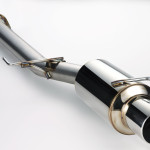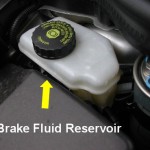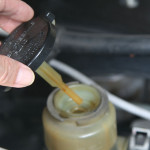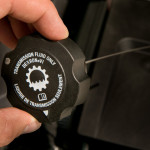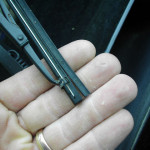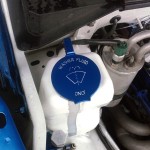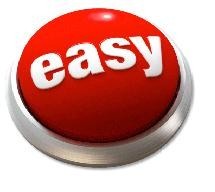Car Care Tips and Tools…
The following self car care maintenance tips will help you sell your used vehicle fast!
- Did you know that a clean, well-maintained vehicle sells faster than one that needs washing or extensive repairs? Plus, a well-cared-for car can fetch a significantly higher price—sometimes thousands of dollars more!
- If you’re thinking “I want to sell my car”, and you want the highest price you can get, follow these handy car care tips below, then call us 310-428-1592 or submit a free quote request for a fast, free, IMMEDIATE quote.
Remember, the cleaner, and nicer your vehicle, regardless of year, make, or model will ALWAYS fetch a higher price in the used car market.
- The following list of car care tips is meant as an ongoing checklist of things to take care of if you need to sell your used car fast.
- Though some of these car care tips can be undertaken immediately, others-like oil change, frequently require that you do regular maintenance.
These car care tips have helped me sell my vehicle fast.
- Inspect the electric terminals every month and replace them if they become corroded or during a routine tune-up. In vehicles with carburetor engines, the battery is conveniently located under the hood for easy access.
- When selling a used vehicle, addressing corrosion is essential, and the battery compartment is a great place to begin your preventative maintenance due to its susceptibility to acidity.
- Engine belts and hoses should always be in good condition, with flexibility and easy bending. Any hose or belt showing signs of dried-out rubber, fraying, glazing, or excessive shredded threads should be replaced immediately to ensure optimal performance and safety.
- Inspect the metal clamps that secure the hoses and ensure they are properly tightened. Replace any hoses that show signs of damage, excessive softness, or hardness. Taking care of these small yet crucial details can make selling a used car quickly much easier.
- Of all the tips that have helped me sell my used car fast, this one requires the most foresight ahead of time.
- Detailed attention paid to something as seemingly insignificant as checking a used car’s oil once a month can pay off big. Checking your oil means removing your oil dipstick mounted on the engine, wiping it clean with a paper, or rag, then re-inserting the dipstick into its resting place (the engine).
- Remove the dipstick a second time, and inspect the fluid level. Your oil dipstick should have notches indicating if the oil level is low. Add oil if necessary.
- To maintain peak performance, your used car’s oil should be completely drained and replaced every 5,000 miles, or 90 days, whichever comes first. Refer to your owner’s manual for oil change frequency. Remember to always replace the oil filter whenever the oil is changed. The absolute minimum is twice a year. If the oil is BLACK, change it IMMEDIATELY! If your car has an electronic oil-change indicator on the instrument cluster, then change your car oil straight away.
Different Types of Motor Oil.
- Premium Conventional Oil – standard on all late model new cars. Most major oil brands have one for service level SL, available in multiple viscosity (degrees of oil thickness). Auto manufacturers often specify a 5W-20, or 5W-30 oil, particularly for those cars in colder climates- an alternate 10-W-30 oil can also be used by cars driven in warmer, or less extreme weather conditions. These aforementioned ratings cover just about every used vehicle on the road.
- Synthetic Blend Oil – These oils are a hybrid of synthetic oil mixed with conventional oil, and overall are formulated to provide protection for somewhat heavier loads and high temperatures.
- This type of oil is less volatile and is good for use in warmer climates because they evaporate slower than conventional oil, which reduces oil loss and increases fuel economy. Synthetic blend oils are often a good alternative for those drivers who want a little better engine protection for less cost than a full synthetic oil.
- Full Synthetic Oil – Full synthetic oils are made for modern high-tech engines used in sports cars and German luxury autos. The oils of this type must pass stringent special tests and display better, longer-range engine performance in several important areas, from viscosity index to protection against deposits.
- Synthetics are often favored in more extreme climates because of the way they flow better at low temperatures, and keep peak lubricity at high temps. The high cost of these oils compared to conventional oil means that only the most expensive and high-performance autos are recommended to use this oil type. Lower performance autos are better served by conventional oils. As always, read, and follow your owner’s manual.
- Higher Mileage Oil – Late model used vehicles are staying on the road longer than ever before. For those used car owners who intend to keep their cars, trucks, or SUVs a long time, there is also the option of using special oil formulated especially for higher-mileage vehicles.
- Almost two-thirds of the vehicles on the road have more than 75,000 miles on the odometer. Check with your dealer for advice on where to find specialized higher-mileage oils.
- Loose, or broken exhaust clamps, and supports can lead to bigger problems for your used car.
- Check for holes in muffler, or pipes and those people living along the coast should guard against rusted parts from all the damp, salty air.
- California’s stringent smog laws require that your mufflers be in tip-top shape.
- Make sure that all your lights are clean, and working, including the brake lights, turn signals, and emergency flashers. Keep spare bulbs, and fuses in your vehicle.
- Often a non-working light is the result of a burned-out bulb, or simple short circuits, and can be fixed for little money.
- The resale value on a used car with faulty lighting can take a nose-dive way in excess of the cost of fixing this simple problem.
- Check the brake fluid every couple of months. Pay attention to your car’s brake master cylinder reservoir lid. If necessary, flip off the retainer clip, and remove the lid, or unscrew the plastic lid, depending on which type your vehicle has.
- Add needed fluid, and check for possible leaks throughout the system. Pay special attention not to overfill the reservoir.
- Examine the power steering fluid level once every couple of months. Check it by removing the reservoir dipstick.
- Add fluid if the level is down, and inspect the attached pump, and hoses for leaks.
- If the steering wheel squeaks too much when you turn it, you may only need to fill your power steering fluid to the proper level.
- Shock absorbers that need to be replaced often suffer from oil seepage. You can test shock action by bouncing the car up and down. The car should stop bouncing when you step back.
- Worn, or leaking shocks should be replaced. Always replace shock absorbers in pairs.
- Keep tires inflated to the recommended pressure, any bulges on the tires indicate that they should be immediately replaced.
- Replace the whole tire when the tread is unevenly worn down, even if there is plenty of thread left on most of the tire.
- Have the wheel alignment checked on your car, this often causes uneven tread wear.
- Get your tires replaced if they are showing balding, replaced them with new ones.
- Few used car accessories recommend a higher price, or helped me sell my used vehicle fast like great tires.
- Check transmission fluid monthly with engine warm and running, and the parking brake on. To check it, shift to drive, and then to park. Remove the dipstick, and wipe dry, insert it, and remove it again. Add the approved type fluid if needed, and be careful not to overfill.
- Inspect the windshield, and rear hatch wiper blades whenever you clean your windows, and replace them if the rubber is worn, or brittle to avoid smearing.
- Keep the windshield washer fluid reservoir full.
- Use some fresh cleaner fluid to clean off the wiper blades.
Tools and Things you Should Carry in your Vehicle!
For Repair:
- A spare tire, in good condition and inflated to the specified pressure, tire jack and tire iron to replace a flat tire
- Tire inflator, or tire inflator-sealer
- Tire pressure gauge
- Duct tape for temporary fixes (leaking hoses, fender bender).
- Socket and screwdriver set
- Flashlight
- Jumper cables
- Car’s user manual, keep it in the glove compartment
For your Safety:
- Tow strap
- Seat belt cutter, and window breaker
- First Aid Kit
- Knife, or Multi-tool
- Reflective triangles and/or flares
For your Convenience:
- Paper towels, umbrella, pencil, and paper, USB mobile device charger, spare change




